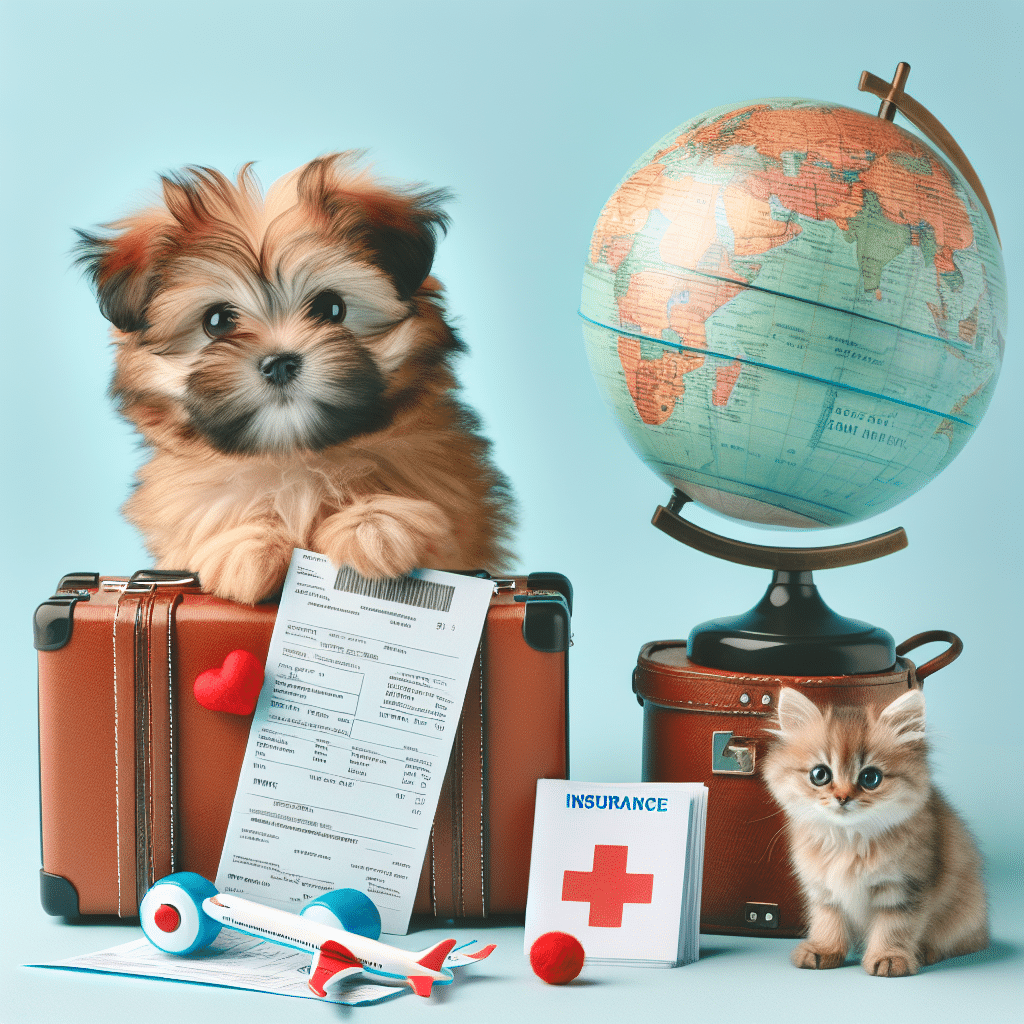Understanding Pet Travel Insurance for Air Travel
Traveling with your pet can be a rewarding experience, but it comes with its own set of challenges. Pet travel insurance is an essential consideration for responsible pet owners planning to take their furry friends on an airline journey. This article delves into the specifics of pet travel insurance, focusing on why it is crucial, the types of coverage available, and how to choose the right plan for your pet.
Why is Pet Travel Insurance Important?
-
Unexpected Health Issues: Pets may experience anxiety, motion sickness, or other health problems when traveling. Pet travel insurance can cover emergency vet visits while away from home, mitigating unexpected expenses.
-
Travel Disruptions: Flight delays or cancellations can disrupt travel plans, causing stress not only for you but also for your pet. Insurance can help cover the costs of accommodation or alternative travel methods if circumstances change unexpectedly.
-
Lost or Injured Pets: Accidents can happen, leading to lost or injured pets during travel. Insurance can provide support for recovery efforts or reimbursements for medical care.
-
Evacuation Coverage: Depending on your destination, there may be natural disasters or emergencies requiring evacuation. Having pet travel insurance can cover these unforeseen events, ensuring your pet’s safety and care are prioritized.
Types of Pet Travel Insurance Coverage
-
Trip Cancellation Coverage: This insurance reimburses you for pre-paid travel costs if you need to cancel or reschedule your trip due to unforeseen circumstances, such as your pet falling ill or an emergency situation.
-
Veterinary Expenses: This portion of the policy covers veterinary bills incurred while traveling. This includes emergency care for injuries, illnesses, or accidents that occur during your trip.
-
Lost Pet Coverage: If your pet goes missing during your travels, this coverage assists with costs associated with advertising, search efforts, or even offering a reward for their safe return.
-
Emergency Boarding: In case of travel interruptions, this coverage can help pay for emergency boarding fees if you cannot care for your pet during a delay.
-
Pet Injury Coverage: This insurance covers medical costs if your pet is injured while traveling, either due to accidents or unforeseen events en route to your destination.
How to Choose the Right Pet Travel Insurance
Selecting the right insurance plan for your pet requires careful consideration. Here are essential factors to keep in mind:
-
Evaluate Your Pet’s Health: If your pet has pre-existing conditions or special needs, you’ll need a policy that accommodates these factors and offers appropriate coverage.
-
Compare Policies: Review multiple insurance providers to compare coverage options, deductibles, and premium costs. Look for customer reviews and ratings to gauge the quality of service from each provider.
-
Check for Exclusions: Understand what is not covered under each policy. Important exclusions can include specific breeds, ages, or health conditions that may not be insured.
-
Read the Fine Print: Thoroughly examine the policy details to understand what is covered and what limitations exist. Don’t hesitate to ask the provider direct questions regarding areas you’re unclear about.
-
Look for Customer Support: Choose an insurance provider known for excellent customer service. If you do encounter an issue, having supportive and accessible customer service can make all the difference.
-
Consider Reimbursement Rates: Different policies have various reimbursement rates for claims. Ensure that the reimbursement rate aligns with your expectations and budget.
Preparing for Air Travel with Your Pet
When preparing for your pet’s air travel, it’s essential to establish a calm environment. Consider these tips:
-
Secure Airline Policies: Different airlines have various rules regarding pet travel. Check specific airline guidelines on crates, weight limits, and health documentation.
-
Visit the Veterinarian: Schedule a vet appointment before your trip. Ensure vaccinations are up-to-date, and obtain a health certificate if required for air travel.
-
Choose an IATA-Compliant Carrier: Select an airline-approved pet carrier that provides enough space for your pet to stand and turn around comfortably.
-
Prepare an Overnight Kit: Ensure your pet has all necessities, including food, water, medications, and comfort items, during the flight.
-
Take Familiar Items: Bring along your pet’s favorite blanket or toy, which can offer reassurance and comfort during a stressful journey.
Additional Considerations
-
Microchipping: Consider microchipping your pet before traveling. This increases the chances of being reunited in case they become lost during your trip.
-
Travel Behavior Training: Regularly expose your pet to travel scenarios to promote comfort and reduce anxiety. This can include short car rides or visits to busy places.
-
Use a Pet-Friendly Airline: Research airlines that prioritize pet safety and comfort. Some airlines offer more spacious accommodations for pets, enhancing the travel experience.
-
Embark Early: Arrive at the airport early to account for additional time needed to check in your pet and manage any last-minute issues that may arise.
-
Stay Calm: Your pet can sense your stress or anxiety. Maintaining a calm demeanor during travels will help reassure your furry friend, making the journey smoother for both of you.
-
Travel with Health Records: Carry your pet’s health records, including vaccination statuses and any history of illnesses, in case you need to provide documentation during your travels.
-
Plan for Temperature Regulations: Verify if the airline has specific restrictions related to temperature for pet travel. Avoid booking flights during extreme weather conditions when possible.
Pet travel insurance helps mitigate risks associated with air travel, providing peace of mind for you and ensuring your pet receives necessary care. By understanding the coverage options and preparing adequately for your journey, you can set the stage for a safe and enjoyable adventure for both you and your furry companion.
